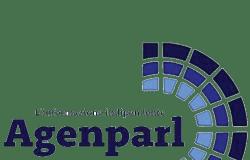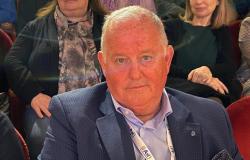NASA announced that the Hubble Space Telescope team will hold a press conference on the state of the space telescope at 10:00 pm CET today, June 4, 2024. In particular, an update on its operations will be given. Mark Clampin, director of NASA’s Astrophysics Division and Science Mission Directorate, and Patrick Crouse, Hubble project manager at NASA Goddard Space Flight Center, will speak during the conference.
The news comes three days after NASA announced that Hubble has once again entered safe modeon May 31, due to erroneous readings from one of its last three gyroscopes that were still functioning.
Gyroscopes measure the speed of the telescope’s rotation, and are part of the system that determines the direction in which it points. By entering safe mode, Hubble interrupted scientific operations, as already happened on April 23, 2024 and three times in a row in November 2023.
In tonight’s press conference announcement, NASA wrote: “Hubble will continue making discoveries, working with other observatories such as the agency’s James Webb Space Telescope, throughout this decade and into the next“.
However, it is not common for the Agency to hold video conferences regarding Hubble, preferring to publish online press releases or update posts on the NASA blog, and above all it is not common for personalities such as Clampin and Crouse to intervene. Should we worry?
Are we at the end?
It’s June 2024, and 34 years after its launch, Hubble has far exceeded its original mission and expected operating time. This is thanks to five Space Shuttle service missionswhich sent astronauts to repair its instruments between 1993 and 2009, to install updates and make the necessary changes to, literally, “extend its life”.
Currently, the telescope is in good health and continues its routine operations, after decades of work in areas ranging from the expansion of the Universe to cosmic structures, from exoplanets to Solar System bodies.
However it is clear that Hubble can’t continue like this forever. Especially without any more service missions to update it: instruments and systems are aging, the telescope periodically experiences safe mode due to the gyroscope system.
Furthermore, over time its orbit is progressively decaying due to atmospheric resistance: from the 600 km at which it orbited in 1990, it is currently at around 525 km. The exact date when Hubble can no longer remain in orbit will depend on how active the Sun is and its impact on the upper atmosphere. A natural atmospheric reentry for Hubble is currently estimated to occur between 2028 and 2040, with a 50% chance of reentry by 2037.
Hubble’s primary instruments and subsystems, such as solar panels and batteries, are expected to continue to operate through the latter part of the 2020s and perhaps into the 2030s, but it is evident that a decision must be made about the fate of the telescopeboth in the short term and in the medium/long term.
Hubble’s gyroscopes: the problem repeats itself
Currently, beyond good health, one of its gyroscopes is often interrupting Hubble’s operations.
Hubble gyroscopes are devices that help scientists make sure the telescope always points in the correct direction. These are small cylinders, inside which there is a float that rotates thousands of times per minute, without interruptions. Two very thin wires measure any change in rotation and turn it into an electrical signal, then fed into computers, which tell the telescope’s reaction wheels how and when to move.
Gyroscopes therefore act as an ultra-accurate balancing system, which helps the telescope move as precisely as possible. Since it launched in 1990, Hubble has used a variety of gyroscopes, including some replacements. During the Space Shuttle’s fifth and final service mission in 2009, six new ones were installed on board.
At the moment only three of the six installed in 2009 are operational. One of the three is malfunctioningcauses erroneous readings and which has forced Hubble to enter safe mode several times in recent months.
The silver lining in all of this is that Hubble doesn’t really need all three gyroscopes to function. As NASA itself mentioned months ago, there could be a possible solution to the telescope’s problems reconfiguring the entire satellite to work with a single gyroscope, turning off the faulty one and keeping the third one still working as a reserve. Of course, the mode with a gyroscope can limit scientific observations to a certain extent. But Hubble would continue to operate. If nothing else in the short term.
A mission to Hubble? Now it seems more difficult
But what can we do to counteract orbital decay? In recent years, NASA has floated the idea of launching a service mission that could bring Hubble to a higher, more stable orbit. This would help extend the life of the telescope, and allow it to continue doing science for at least another two decades.
A study was actually conducted by SpaceX between 2022 and 2023, to study the feasibility of this operation with a Crew Dragon capsule. The study involved SpaceX and billionaire astronaut Jared Isaacman and involved a privately funded mission, without any government costs. Isaacman had suggested, again at the end of 2022, this mission as the second of the Polaris Program. The basic concept of the mission involved docking a Crew Dragon to Hubble, possibly using a capture mechanism installed during the Space Shuttle’s last service mission in 2009, and raising its orbit.
The study lasted six months and ended in early 2023, however neither NASA nor SpaceX have commented about results or next steps. However, it seems unlikely that NASA will be able to make an announcement regarding this mission this evening, given that the press conference comes after yet another temporary mode of the telescope.
And given all the budget problems the agency is facing. In recent months, NASA’s Science Mission Directorate has had a serious budget problem. There is not enough money for all the missions already underway or in planning. The Chandra space telescope will also suffer major cuts in its mission, perhaps even having to interrupt it. Hubble, a veteran of space observation of the cosmos, could potentially find itself among the victims of budget reductions. Or maybe not?
In theory everything is possible. However, in the current state of affairs, considering all aspects and the fact that the service contract for Hubble extended in 2021 expires in 2026, there is inevitably a suspicion that they may give us bad news tonight.
This is the NASA press release announcing the press conference.

© 2024 Astrospace.it All rights reserved. This article may be reproduced or distributed in full only with the written authorization of Astrospace.it or partially with the obligation to cite the source.








